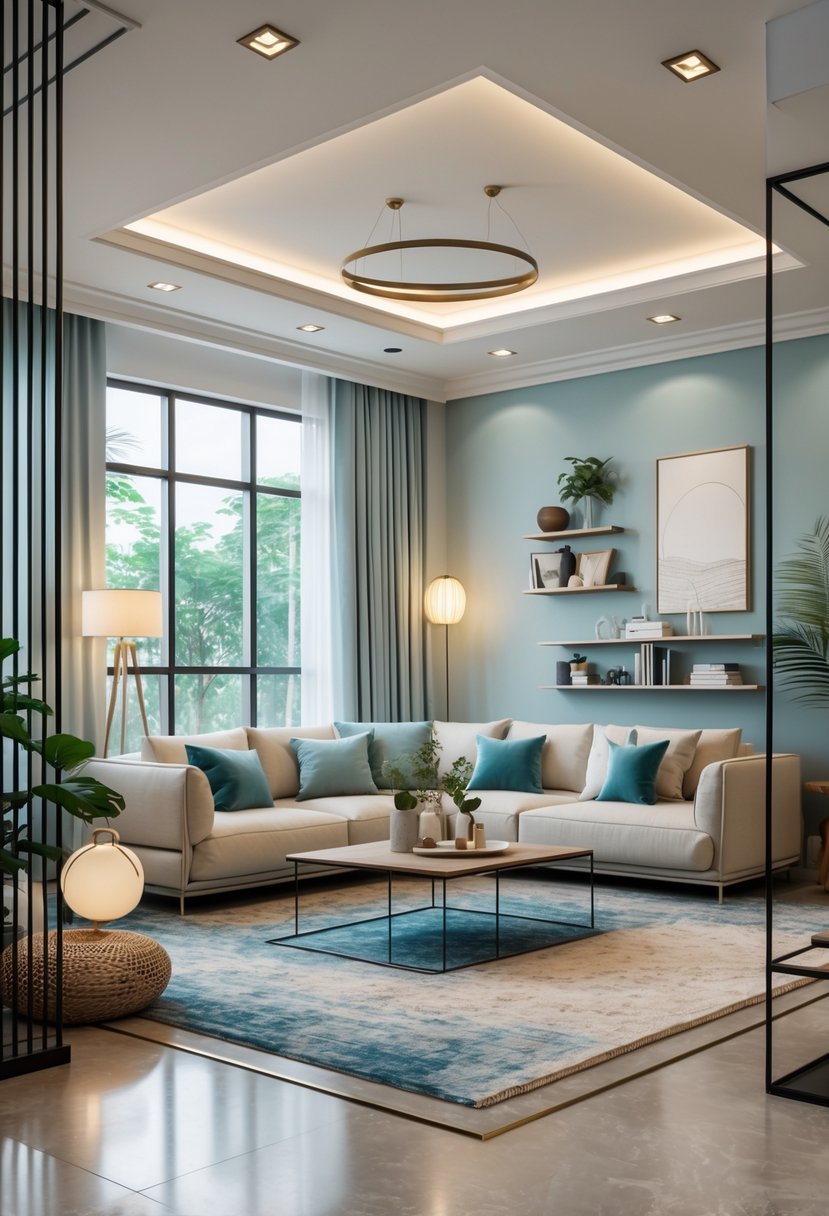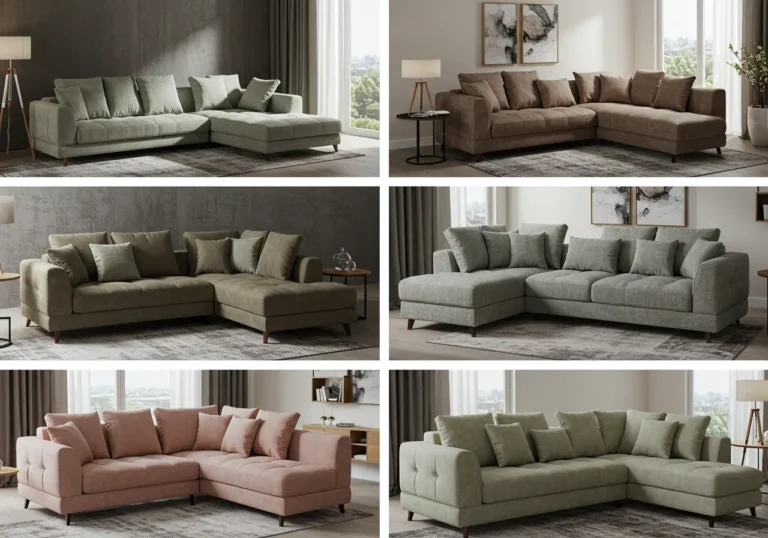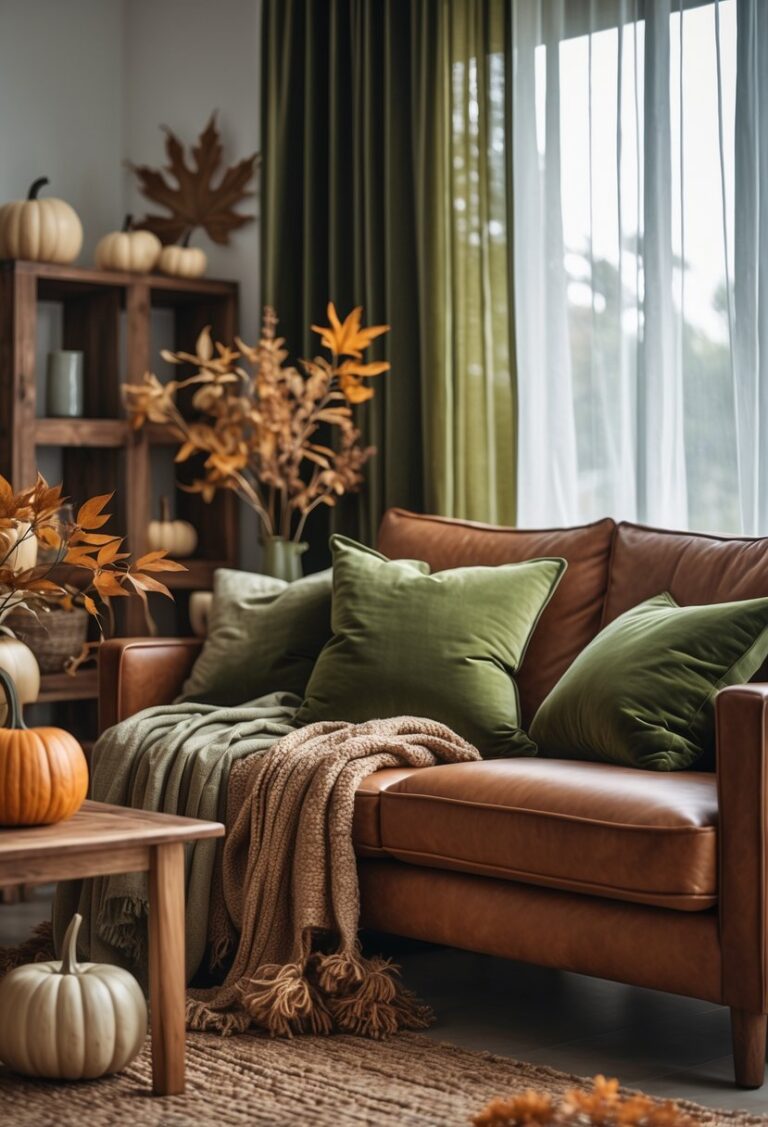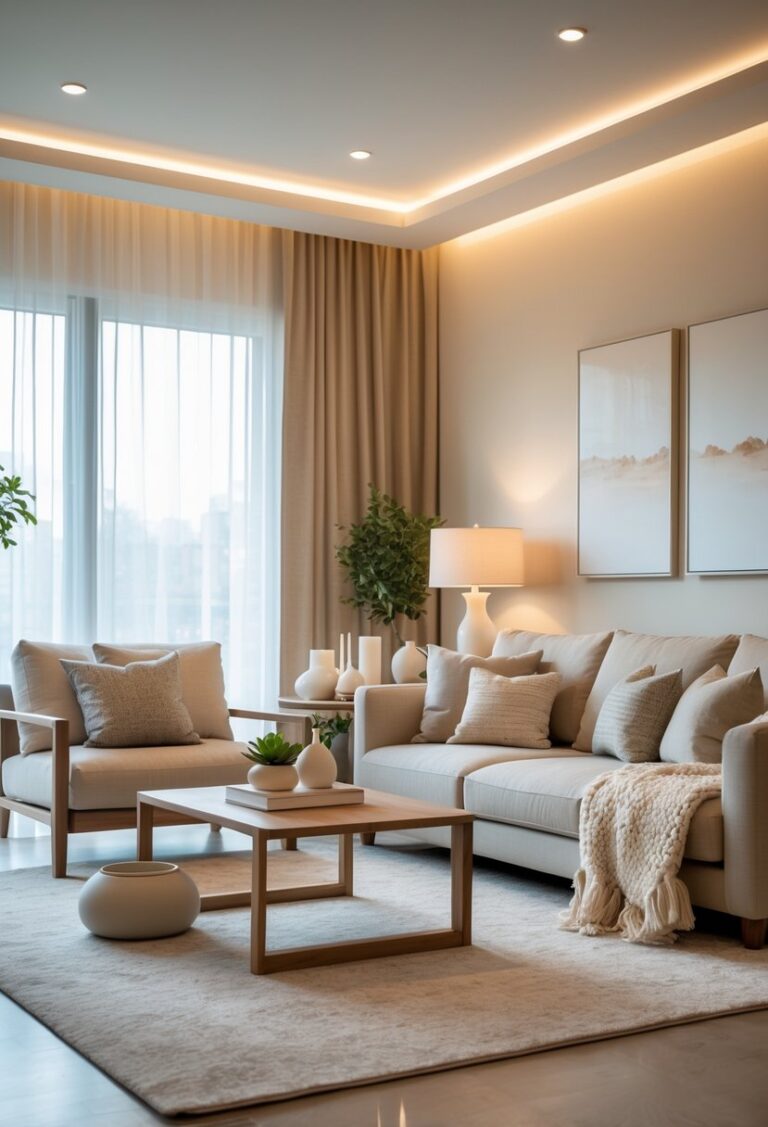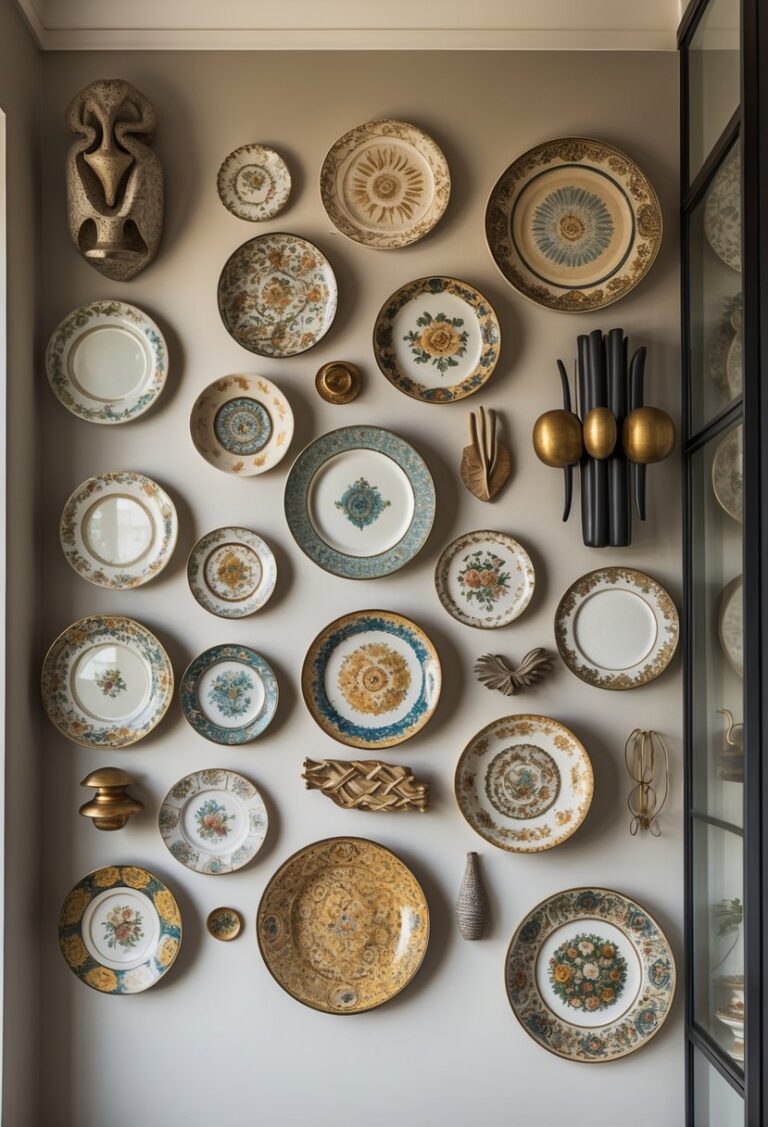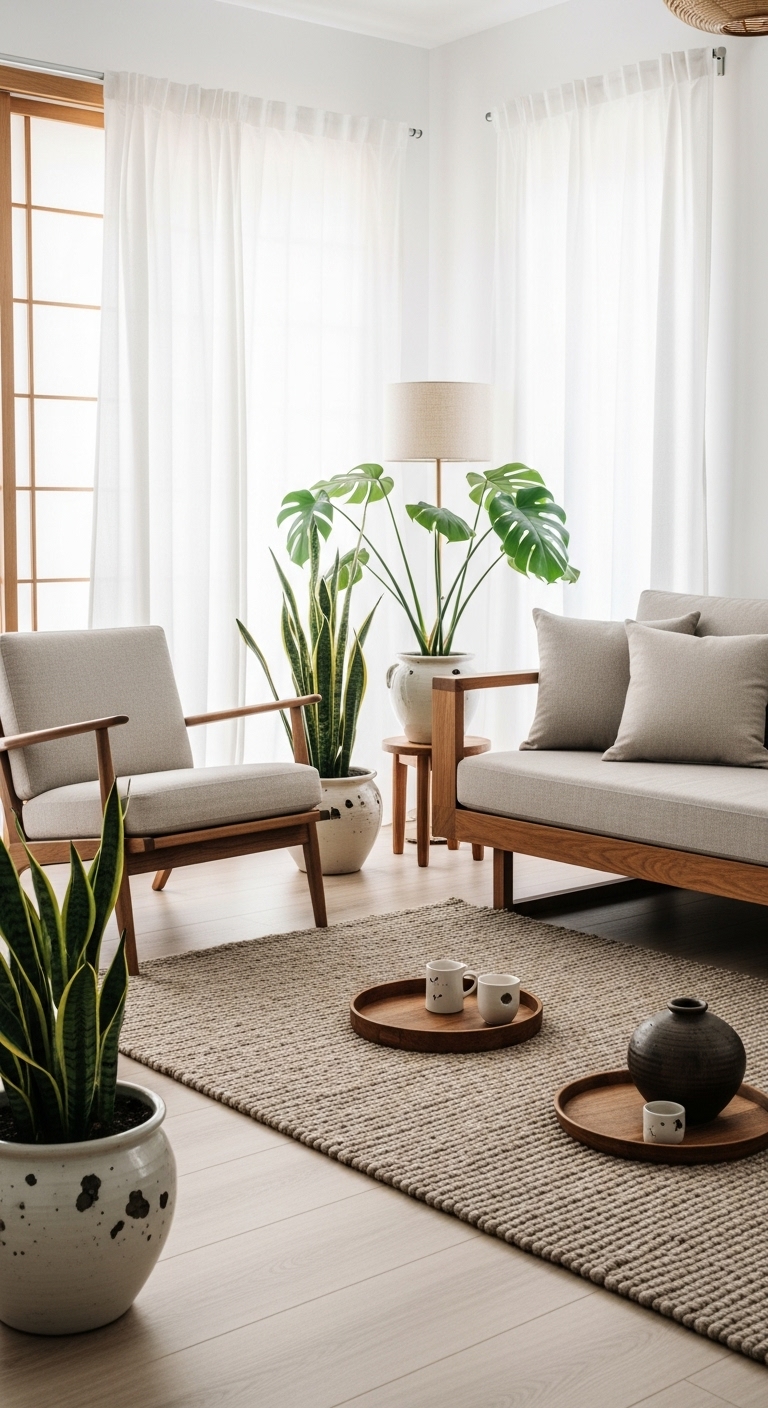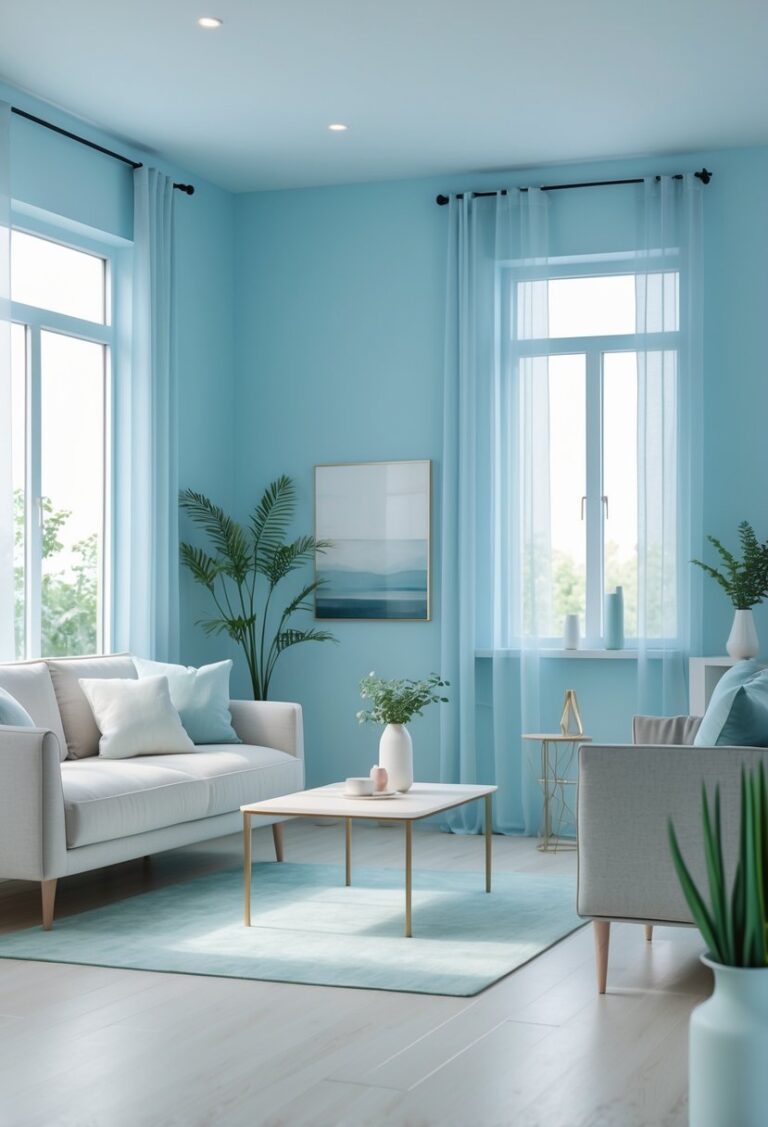Living Room Divider Ideas: 14 Stylish Solutions to Maximize Space and Privacy
A living room divider helps you create separate spaces within one room, making your area more organized and functional. It gives you the ability to define different zones for activities like relaxing, working, or entertaining without needing to build walls.

You can use a divider to add privacy or to control the flow of your living space. Choosing the right type can also help enhance your room’s style while keeping things open and airy.
1) Rustic Barnwood Foldable Screen

You can use a rustic barnwood foldable screen to divide your living room easily. It features a solid wood design that is both sturdy and lightweight.
The screen folds for simple storage and quick setup. Its natural barnwood color fits well with farmhouse and modern rustic styles.
This type of divider helps define spaces without building walls. It also adds a warm, natural touch to your room decor.
2) Freestanding Bookshelf Divider

You can use a freestanding bookshelf as a room divider to separate spaces while adding storage. These shelves stand on their own and don’t need to be attached to walls.
They come in various sizes and styles, often with multiple tiers to hold books, decor, or plants. This makes them functional and stylish in your living room.
Many models include safety features like anti-toppling devices, which can be important if you have kids or pets.
3) Paneled Wooden Room Divider

You can use a paneled wooden room divider to create separate areas in your living room. These dividers often have multiple folding panels, making them easy to move and adjust.
They provide privacy without building walls. The wood adds a natural, warm feel to your space.
Many paneled dividers come in different styles, from simple to decorative. Choose one that fits your room’s look and size.
4) Curved Plywood Room Divider

You can use a curved plywood room divider to separate areas in your living room without feeling closed off. These dividers often have a simple design but create clear boundaries between spaces.
The curved shape adds a soft look compared to straight panels. You can find versions made with inner walnut layers for extra style and strength. This type of divider helps define your space while keeping it open and airy.
5) Screen Room Divider from IKEA

You can use a screen room divider from IKEA to create a small, private area in your living room. These dividers help block visual distractions so you can focus better.
They also work well with sound-absorbing panels to reduce noise.
IKEA screens are usually simple and stylish, making them easy to move and fit into different spaces in your home.
6) Metal Frame and Fabric Panel Divider

You can use metal frame dividers with fabric panels to create a sturdy partition in your living room. These dividers often have multiple panels connected by hinges or buckles, letting you fold or adjust them as needed.
The fabric provides privacy while allowing airflow. The metal frame ensures the divider stays stable and durable. This type of divider works well for separating spaces without making the room feel closed off.
7) Decorative Folding Shoji Screen

You can use a folding Shoji screen as a stylish living room divider. It typically features wooden frames with translucent rice paper panels. This design lets light pass through while still giving you privacy.
These screens often come with multiple panels, making them easy to fold and move. They fit well in many rooms, adding a simple but elegant look to your space.
8) Freestanding Plant Wall Divider

You can use a freestanding plant wall divider to separate spaces while adding greenery. These dividers hold multiple plants on both sides, making them perfect for small offices or waiting areas.
They are portable, so you can move and rearrange them as needed. This option helps create a natural barrier without blocking light or air flow.
9) Modern Minimalist Glass Partition

You can use a modern minimalist glass partition to separate your living room without blocking light. These partitions keep your space open and airy, making rooms feel larger.
Glass walls or panels work well if you want a sleek, simple look. They fit with many styles and let natural light pass through. This option is great if you want to divide space but keep a bright, open atmosphere.
10) Industrial Pipe and Wood Divider

You can use an industrial pipe and wood divider to create a strong, stylish split in your living room. These dividers often combine metal pipes with wood shelves or panels. This mix gives your space a raw, urban feel without being too heavy.
The design is functional and can hold books or decor. It fits well in modern or rustic homes. You will find many options, from built-in shelves to simple frame dividers. This style is practical and adds character to your room.
11) Multi-panel Bamboo Folding Screen

You can use a multi-panel bamboo folding screen to divide your living room simply and naturally. These screens usually have 4 to 8 panels connected with hinges.
They fold easily to save space when you don’t need them. The bamboo material adds a simple, rustic look to your room.
These screens stand on their own without extra support. You can move them around as needed to create privacy or separate areas.
12) Open Cube Shelf Divider

You can use an open cube shelf divider to separate your living room into different areas. It offers storage space for books, plants, or decorations while keeping the room open and airy.
This type of divider works well in open floor plans or studios. It helps create privacy without blocking light or making the space feel smaller.
The design usually includes multiple compartments you can organize however you like. This adds both function and style to your living room.
13) Fabric Curtain Divider

You can use fabric curtains to divide your living room easily. These curtains hang from ceiling tracks or rods, giving you flexible space separation.
Fabric curtain dividers come in many colors and materials. They can block light or sound depending on the type you choose.
These dividers are simple to install and move. This makes them a practical option if you want a quick change without building walls.
14) Mid-century Modern Folding Screen

You can use a mid-century modern folding screen to divide your living room clearly. These screens often have simple, clean lines and geometric patterns that fit well with many decor styles.
They fold easily, so you can move or store them when needed. Many come in wood, metal, or fabric, giving you options to match your space.
This type of screen works well for creating private areas without building walls. It adds both function and style to your room.
Benefits of Living Room Dividers

Living room dividers can help you use your space more efficiently, provide privacy when needed, and clearly separate different areas within an open floor plan. These features make them practical for many living situations.
Maximizing Space Efficiency
Using living room dividers lets you turn one large room into multiple usable spaces. You can create a quiet reading corner, a workspace, or a play area without building permanent walls.
Dividers are often movable, so you can adjust your space as your needs change. This flexibility saves you money and time compared to remodeling.
Additionally, some dividers come with shelves or storage, helping you keep your living room organized while making the most of available space.
Enhancing Privacy
Dividers provide a way to create private areas without closing off your whole living room. This is especially helpful if you share your space with family or roommates.
They block sightlines, so you can focus without distractions or have personal conversations. Soft dividers like curtains can also reduce noise.
You can choose different materials or designs to control how much privacy you get, from partial screens to more solid barriers.
Defining Open-Plan Areas
In open floor plans, dividers help create clear zones for different activities. You can mark where the living area ends and the dining or kitchen space begins.
Unlike walls, dividers let light flow through so rooms still feel bright and open. Options like slatted screens or glass panels add separation without making rooms feel smaller.
This makes your home more functional while keeping a modern, open look. You can choose styles that match your decor and personal taste.
Design Considerations for Living Room Dividers

When selecting a living room divider, think about how it fits your space and style. The material affects durability and function. Matching the divider with your existing decor keeps your room looking balanced and intentional.
Choosing the Right Materials
The material of your divider affects both appearance and use. Wood is sturdy and adds warmth. It works well if you want shelves or storage built in. Metal dividers are strong and modern but can feel colder or more industrial.
Glass or acrylic options keep your room feeling open and let light pass through. These are good if you don’t want to block natural light. Fabric curtains or folding screens are flexible and lightweight but less solid. Choose something easy to move or open if you need versatility.
Think about durability, noise reduction, and privacy when picking materials. For example, a thick wooden screen blocks sound better than a sheer curtain. Also, consider how easy it will be to clean and maintain daily.
Coordinating with Existing Decor
Your divider should enhance your current style, not clash with it. Check the colors, textures, and shapes already in your room. Match or complement these elements to create a smooth transition between divided spaces.
If your space is modern, minimalist dividers with clean lines or glass walls fit best. For a cozy or rustic look, try wood with visible grain or decorative patterns. Use colors from your cushions, rugs, or walls to tie in your divider.
Don’t forget scale. A tall, bulky divider might overwhelm a small room. Slim and open designs, like slatted wood or floating shelves, keep the area airy while still defining zones. Consider how the divider will look from all angles since it will be a visible part of your living space.
Frequently Asked Questions

You can use a range of materials and styles to create a room divider that fits your space and needs. Some solutions work better for limited rooms, while others offer easy setup or stylish design.
What are some creative ideas for designing a room divider?
Try a freestanding bookshelf to store items while dividing space. Use a rustic barnwood foldable screen for a natural look. Curved plywood dividers add shape and interest without blocking light.
Which types of room dividers work best for small living spaces?
Choose slim paneled wooden dividers or lightweight folding screens. These take up less floor space and can be moved easily. Screen room dividers from IKEA offer compact and stylish options.
How can I build a temporary room divider wall?
Use lightweight frames with fabric or panels clipped on. Freestanding bookcases also act as temporary dividers, easy to move and reposition. Avoid permanent fixtures to keep your space flexible.
What should I consider when selecting a folding room divider?
Look for sturdy hinges and durable materials. Make sure it folds flat for storage and matches your room’s style. Consider dividers made from barnwood or paneled wood for a balance of strength and design.
What are the benefits of using hanging room dividers over traditional types?
Hanging dividers save floor space and create a soft separation. They are easy to install and remove, making them good for renters or changing layouts. Light fabrics can maintain brightness while adding privacy.
Where can I find affordable room dividers that still offer quality?
Check stores like IKEA for screen room dividers at reasonable prices. Local artisans might offer metal and glass dividers at good rates. Freestanding bookshelf dividers can often be found secondhand or at budget furniture shops.

